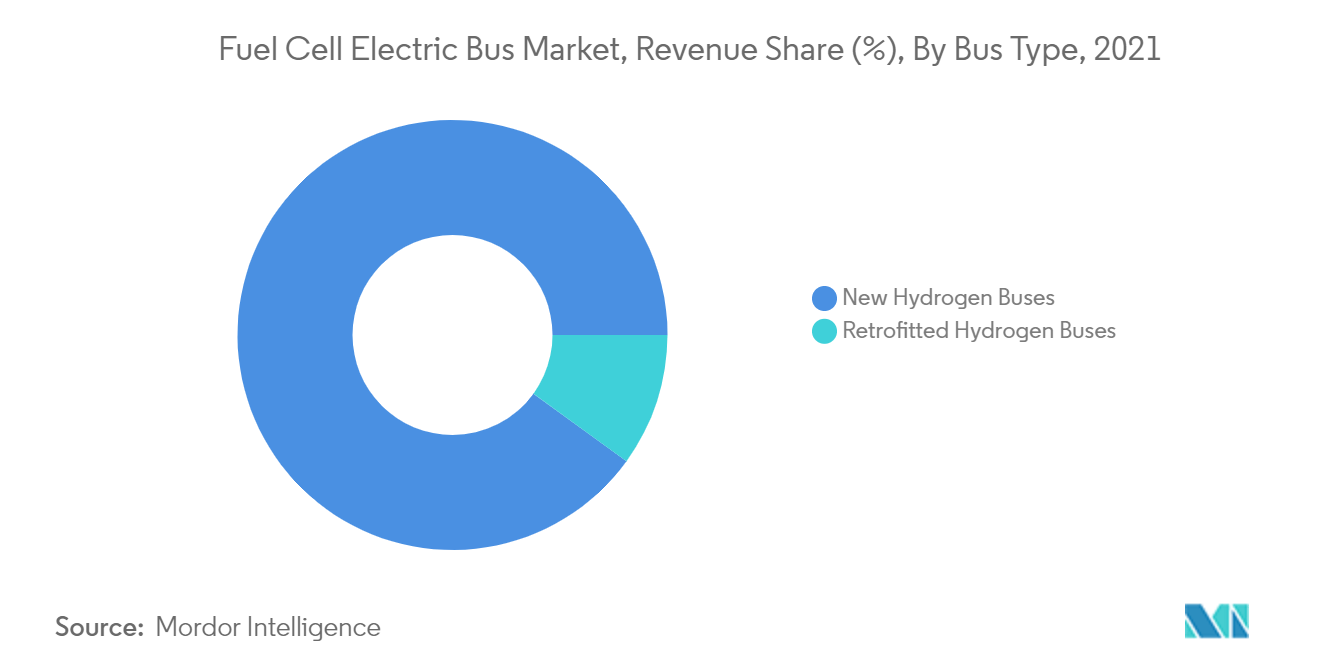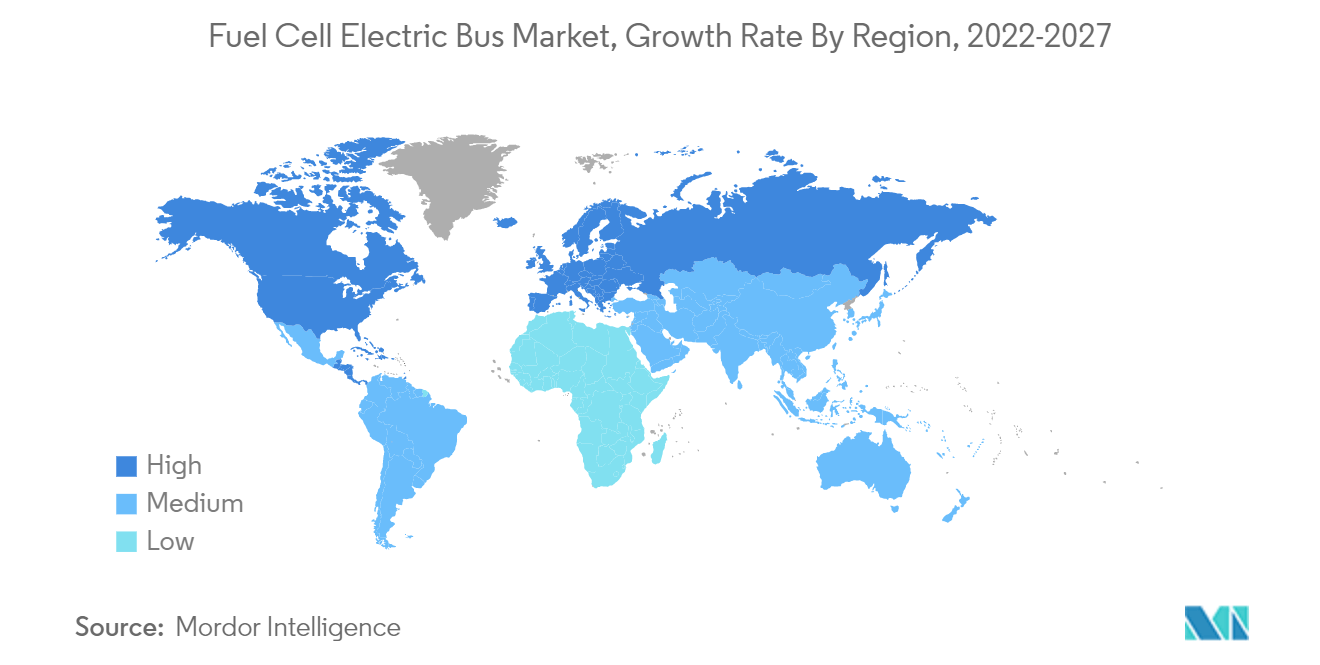Market Trends of Fuel Cell Electric Bus Industry
This section covers the major market trends shaping the Fuel Cell Electric Bus Market according to our research experts:
Emission Concerns and Increasing Hydrogen Bus Testing Fueling Market Demand
Fuel-cell-powered electric vehicles are becoming increasingly common in the automotive industry. They are a means of reducing pollution and other greenhouse gas emissions while also improving energy efficiency. Governments and environmental agencies are enacting stringent emission standards and laws in response to growing environmental concerns. These standards and laws are expected to raise the cost of manufacturing fuel-efficient IC engines, which will increase the demand for electric powertrains in the coming years.
In many nations, government initiatives are anticipated to be crucial in promoting fuel cell electric vehicles. In an effort to cut down on emissions and encourage the sale of fuel cell vehicles, a number of nations are enacting plans to outlaw gasoline and diesel automobiles between 2030 and 2040. In addition, a number of tax breaks and incentives for EVs are being implemented to boost sales. The demand for electric vehicles is anticipated to rise as a result of these initiatives, supporting the expansion of the Fuel Cell Vehicle market.
For instance, European and American regulations on CO2 emissions are getting more stringent.Europe has established emission limits of 59 g/km with 95 g/km by 2020 and a further 37.5% reduction by 2030.In accordance with the Passenger Vehicle Corporate Average Fuel Economy (CAFE) standards for 2025, North America has established emission limits of more than 99 g/km.In the coming years, OEMs will have to market more electrified vehicles in order to meet pollution standards and avoid penalties, which is expected to boost market growth.
The atmosphere has been polluted as a result of an increase in the volume of vehicle exhaust emissions from all kinds of cars that run on fossil fuels.Numerous serious respiratory illnesses have increased as a result of poor air quality.In Europe, vehicle pollution, which includes NOx, volatile organic compounds, PM2.5, PM10, and other pollutants, makes up about 30% of all air pollution.
The fuel cell bus market is expected to expand during the forecast period thanks to the rise in government initiatives and regulations aimed at restricting or banning the sale of buses powered by IC.

Europe is Leading the Market
The European Union has put forth some of the world's most stringent emission norms with a view to reducing the use of conventional fuel vehicles and encouraging the use of alternative fuel vehicles in the region.
These emission norms are expected to drive the market and manufacturers towards zero-emission vehicles. The global rush toward lithium-ion mineral for battery manufacturing will gradually shift the market towards hydrogen fuel cell powered electric buses once the lithium battery market is saturated.
European Union funding has made it possible to introduce variety of modern public transport technologies, including buses fueled by alternative energy sources. Several projects have been launched in order to research and develop suitable solutions to the vehicular emissions problem. This has increased the use of hydrogen vehicles by over 23% in 2020 as compared to 2019. For instance,
Project CHIC was launched in October 2020. The project's primary objective was to cater to the increasing demand for zero-emission vehicles and in line with this, introduced a largest number of hydrogen powered buses to the streets of Europe in October 2020. These buses are currently used in 7 major European cities present in UK, Switzerland, Italy, Germany, and Norway. The project included 36 buses that are piloting the project of testing the viability of this technology across the region.
Several countries of the European region have taken the steps towards transitioning their public transport fleet to hydrogen fuel powered vehicles in order to meet their own emission targets. For instance,
In June 2020, Germany adopted the National Hydrogen Strategy after the approval from its federal cabinet. The policy extends a total investment of EUR 7 Billion by the country into ramping up the existing public transport fleet to hydrogen technologies in the future. The funding will be available for utilization or both vehicles and infrastructure development.
The Austrian government has initiated the Underground Sun Storage 2030 project that explores the safe, seasonal and large volume storage of renewable energy in the form of hydrogen that is expected to be used to cater to the country's energy needs including the use in public transport. The country also invested a huge EUR 3.3 million in 2019, to fund the new Graz Hydrogen and Electric buses project that emphasized on urban transport development.
In November 2021, Belgium announced the Belgian Hydrogen Vision and Strategy after its approval by the Council of Ministers. The policy mainly focused on 3 sectors for electrification by hydrogen that included the country's transportation sector. With this, the country expects to be reliable on hydrogen and go fully carbon neutral in transport by 2050.
The implementation of stringent emission norms coupled with targets set for adoption of hydrogen buses and other alternative fuel powered vehicles are likely to drive the adoption of hydrogen buses during the forecast period.


